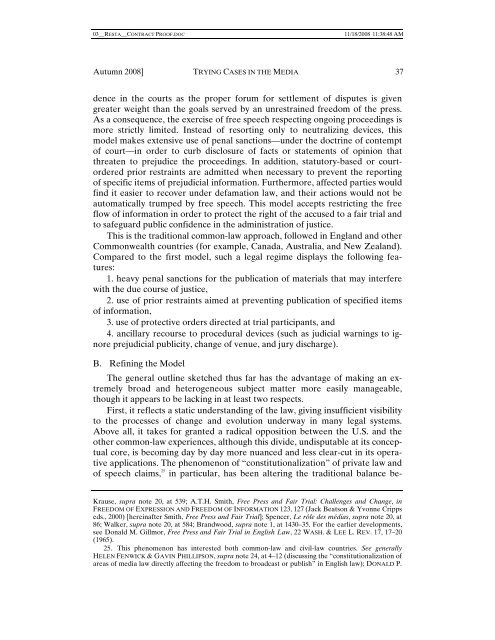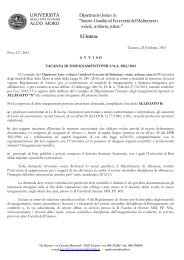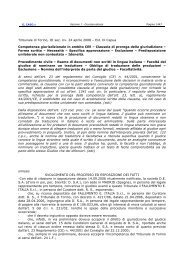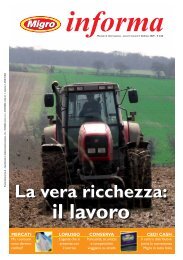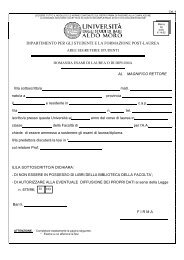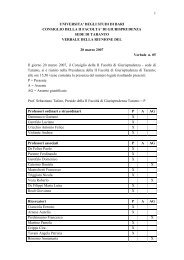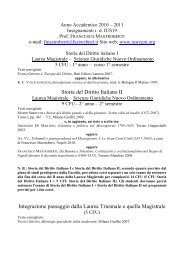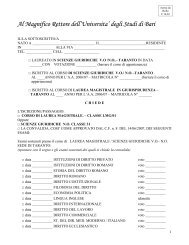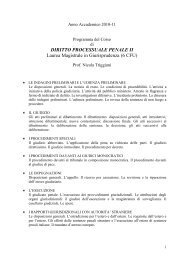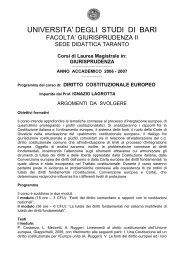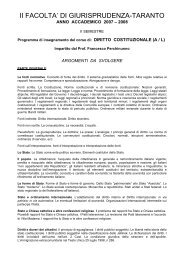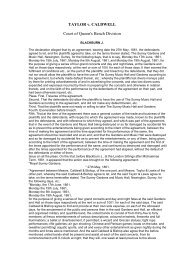TRYING CASES IN THE MEDIA: A COMPARATIVE OVERVIEW
TRYING CASES IN THE MEDIA: A COMPARATIVE OVERVIEW
TRYING CASES IN THE MEDIA: A COMPARATIVE OVERVIEW
Create successful ePaper yourself
Turn your PDF publications into a flip-book with our unique Google optimized e-Paper software.
03__RESTA__CONTRACT PROOF.DOC11/18/2008 11:38:48 AMAutumn 2008] <strong>TRY<strong>IN</strong>G</strong> <strong>CASES</strong> <strong>IN</strong> <strong>THE</strong> <strong>MEDIA</strong> 37dence in the courts as the proper forum for settlement of disputes is givengreater weight than the goals served by an unrestrained freedom of the press.As a consequence, the exercise of free speech respecting ongoing proceedings ismore strictly limited. Instead of resorting only to neutralizing devices, thismodel makes extensive use of penal sanctions—under the doctrine of contemptof court—in order to curb disclosure of facts or statements of opinion thatthreaten to prejudice the proceedings. In addition, statutory-based or courtorderedprior restraints are admitted when necessary to prevent the reportingof specific items of prejudicial information. Furthermore, affected parties wouldfind it easier to recover under defamation law, and their actions would not beautomatically trumped by free speech. This model accepts restricting the freeflow of information in order to protect the right of the accused to a fair trial andto safeguard public confidence in the administration of justice.This is the traditional common-law approach, followed in England and otherCommonwealth countries (for example, Canada, Australia, and New Zealand).Compared to the first model, such a legal regime displays the following features:1. heavy penal sanctions for the publication of materials that may interferewith the due course of justice,2. use of prior restraints aimed at preventing publication of specified itemsof information,3. use of protective orders directed at trial participants, and4. ancillary recourse to procedural devices (such as judicial warnings to ignoreprejudicial publicity, change of venue, and jury discharge).B. Refining the ModelThe general outline sketched thus far has the advantage of making an extremelybroad and heterogeneous subject matter more easily manageable,though it appears to be lacking in at least two respects.First, it reflects a static understanding of the law, giving insufficient visibilityto the processes of change and evolution underway in many legal systems.Above all, it takes for granted a radical opposition between the U.S. and theother common-law experiences, although this divide, undisputable at its conceptualcore, is becoming day by day more nuanced and less clear-cut in its operativeapplications. The phenomenon of “constitutionalization” of private law andof speech claims, 25in particular, has been altering the traditional balance be-Krause, supra note 20, at 539; A.T.H. Smith, Free Press and Fair Trial: Challenges and Change, inFREEDOM OF EXPRESSION AND FREEDOM OF <strong>IN</strong>FORMATION 123, 127 (Jack Beatson & Yvonne Crippseds., 2000) [hereinafter Smith, Free Press and Fair Trial]; Spencer, Le rôle des médias, supra note 20, at86; Walker, supra note 20, at 584; Brandwood, supra note 1, at 1430–35. For the earlier developments,see Donald M. Gillmor, Free Press and Fair Trial in English Law, 22 WASH. & LEE L. REV. 17, 17–20(1965).25. This phenomenon has interested both common-law and civil-law countries. See generallyHELEN FENWICK & GAV<strong>IN</strong> PHILLIPSON, supra note 24, at 4–12 (discussing the “constitutionalization ofareas of media law directly affecting the freedom to broadcast or publish” in English law); DONALD P.


